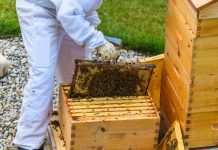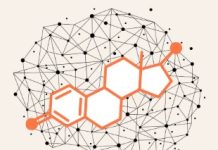Antibiotic use and antimicrobial resistance, a growing issue, is discussed by Professor Colin Suckling from the University of Strathclyde
Whether you believe it is apocalyptic or just plain serious there is no doubt that the world has a problem with antibiotics, or to be more specific, antimicrobial resistance (AMR). The word ‘apocalypse’ has undoubtedly been chosen to describe AMR because of its manifold associations with terminal disaster so that politicians, policy makers, and the public can be appropriately energised with concern and, hopefully, meaningful action.
At the end of April I attended a conference held at our Technology and Innovation Centre at the University of Strathclyde in Glasgow run by SULSA, the Scottish Universities’ Life Sciences Alliance, as one of only two or three card-carrying chemists. Scottish Universities have done a lot in the last 20 years to pool their skills in research and to maximise its impact. Collaborative organisations such as SULSA exist in chemistry and physics also. My own Department belongs to WestCHEM, a close collaboration with the University of Glasgow, which is in turn part of ScotCHEM. The predominant discipline represented at the SULSA event was microbiology but everything from chemistry to environmental science and medicine was also represented. There were extensive discussions on policy and funding also.

Antibiotics and antimicrobial resistance
There was little really new science in the lecture presentations, which was a pity, but there was nevertheless a strong overall message from the conference, namely an emphasis on the scale of AMR as a one-world problem. This concept has been tacit and implicit in some of our strategic thinking at the University of Strathlcyde but the SULSA conference openly and explicitly emphasised the global scale and multiple dimensions of AMR. Human health comes to mind first, naturally, but the importance of animal health and environmental well-being were also highlighted, especially in the contexts of antibiotic stewardship (looking after the safe and effective use of antibiotics) and the security of food production. It’s hard to think of anything peaceable with greater global significance requiring genuine global solutions.
Comparing human and animal health
Just to give a perspective of the comparative significance of the human and animal health aspects using some statistics from the UK with a human population of about 65 million, there are about 60 million companion animals and 1000 million agricultural animals, all of which are potential consumers of antibacterial drugs. Add to that substantial quantities of fungicides are used in agriculture, many of which belong to the same classes of compound as those used in human medicine.
The UK and even the whole EU are a small part of the challenge these days when the size of giant countries like China and India are considered. As with many challenges, however, one can only tackle those things that are immediately accessible and that can be influenced. So our efforts in applying heterocyclic chemistry, about which I have written in these Special Reports, Profiles, and E-Books are but one small part of a response that takes many forms and works on many fronts. One of the great things about our research at Strathclyde and in particular our anti-infective project using minor groove binders for DNA (S-MGBs) is that we tackle aspects of infectious disease caused by many pathogens relevant to many parts of the world. Bacteria, of course are important and our most advanced compound is planned to go into a Phase 2 clinical trial this year for the treatment of Clostridium difficile infections (www.mgb-biopharma.com/scottish-biopharmaceutical-company-mgb-biopharma-receives-2-78m-grant-award-for-phase-iia-clinical-trial). As I presented at the SULSA meeting, however, we also have advanced compounds for the treatment of malaria and tuberculosis, both of which can be untreatable with current drugs and are most troublesome in south-east Asia and South Africa respectively. Most importantly we are developing compounds in partnership with the University of Glasgow to tackle African Animal Trypanosomiasis, a serious problem for cattle and other domestic animals in sub-Saharan Africa. In this way our research is relevant to all sorts of applications in human and animal health, the latter being closely linked with food supply security in sub-Saharan Africa. So we’re doing our bit for a one-world problem.








